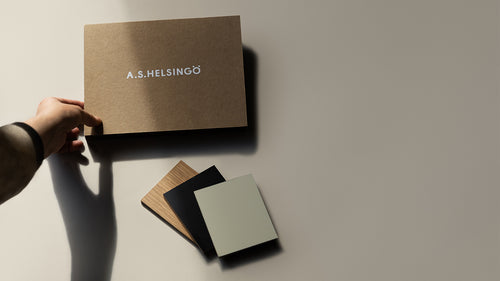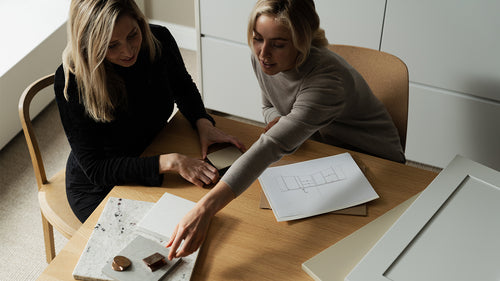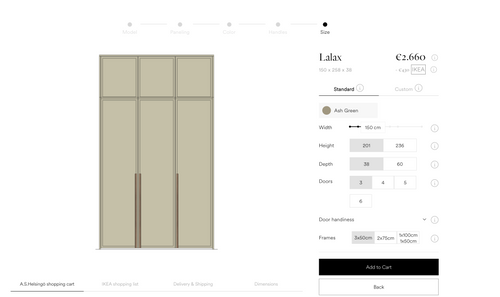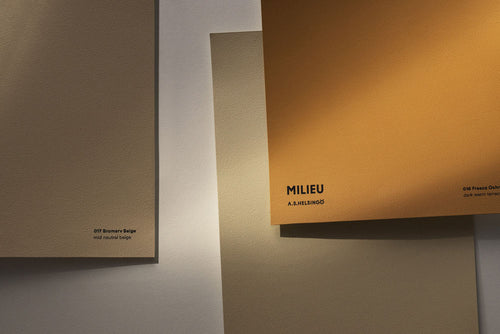Wine Spills & Countertops: Which Material Handles The Red Wine Test Best?
Spilling red wine happens. It’s a part of life. But how does your countertop material handle that inevitable splash of red?

We put three popular materials—marble, quartz, and ceramic—to the test to see how they react to a 5-minute red wine spill. Let’s just say, we didn’t hold back.

The results are in: honest wine spill test
-Marble: Stains
-Quartz: No stains
-Ceramic: No stains

Quartz & ceramic: the spill-proof heroes
First up, quartz and ceramic. Both handled the red wine like champs—no stains left behind. These materials are incredibly resilient, making them ideal for those who want a countertop that can stand up to life’s little accidents without losing its look. Both offer durability with an easy-to-clean surface, making spills a non-issue.
Marble: the story behind the stain
While quartz and ceramic stood strong against the red wine, marble showed some staining. But here’s the thing: Every mark tells a story. For natural stone like marble, that patina (yes, even the stains!) adds a unique touch over time.
In fact, in places like France and Italy, this natural aging process is celebrated. A well-worn surface is seen as a sign of authenticity and timelessness—a material that’s truly lived in. ❤️
Surface Finish Matters: If your marble countertop has a glossy finish, the loss of shine from a stain will be more noticeable under light reflections. In contrast, a matte surface hides the marks much better, making stains less visible. From a top-down view, you might not even notice a spill unless it’s illuminated by light.

So, what can you do if you spill wine on your marble countertop?
If you spill wine and act fast, you can avoid permanent damage. Marble’s patina is often just a loss of shine on the surface, not the stone itself. If you do find a stain, don’t panic! You can restore it with light polishing or sanding, using tools designed for stone. For deeper damage, professional sanding might be the best solution to bring back that natural shine.
Key takeaway: keep your counters happy!
We recommend wiping up spills right away, but don’t worry too much if life happens. Every mark is part of your space’s story. Whether you choose marble, quartz, or ceramic, the right countertop for you is one that matches your lifestyle and aesthetic. And don’t forget—patina only adds character.
How to keep your countertop in top condition:
Wipe spills immediately – Remove stains or spills right away to prevent them from soaking into the surface. Use a soft cloth and mild cleaning solution.
Avoid harsh chemicals – Steer clear of strong substances like bleach or ammonia, which can damage the surface.
Cleaning and protection – Quartz and ceramic countertops are easy to maintain, but marble should be regularly treated with surface oil or wax.
Prevent excess moisture – Keep your countertop dry to avoid moisture absorption, especially around the seams.
Protect and maintain – Use cutting boards and place hot items on trivets. Glossy surfaces may need occasional polishing over time.
Want to dive deeper? Read our full article on countertops where we compare these three materials and help you choose the perfect one for your home.

 Looking for the perfect colour? Order samples
Looking for the perfect colour? Order samples
 How to buy a kitchen? Read our guide
How to buy a kitchen? Read our guide
 Explore Wardrobe Collection
Explore Wardrobe Collection
 Shop Wardrobe Doors
Shop Wardrobe Doors
 Get inspired – explore sideboards
Get inspired – explore sideboards
 Buy sideboard
Buy sideboard
 Buy bathroom vanity
Buy bathroom vanity
 Colour sampling without painting: Adhesive swatches
Colour sampling without painting: Adhesive swatches
 Your life in colour - read our painting guide
Your life in colour - read our painting guide



